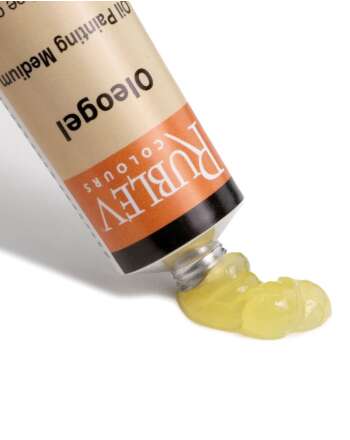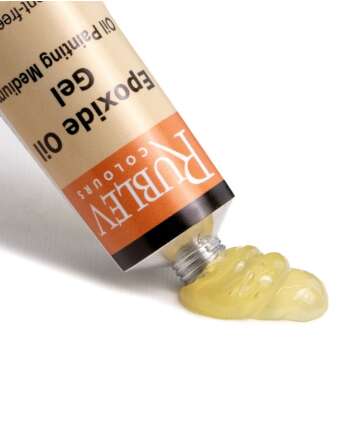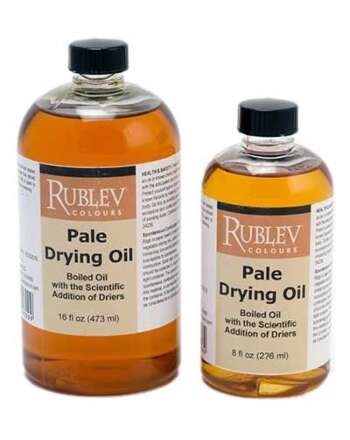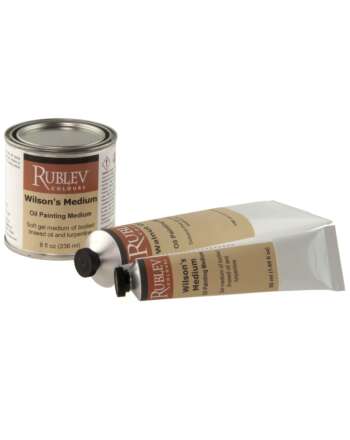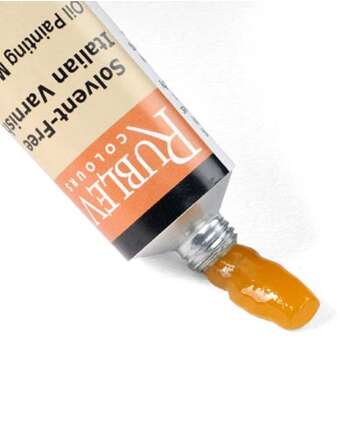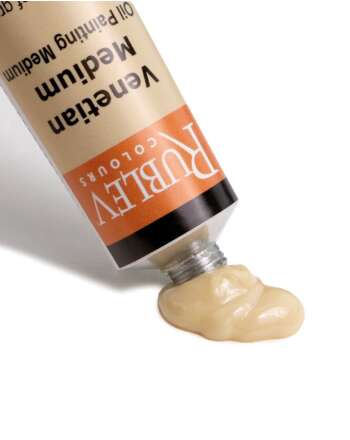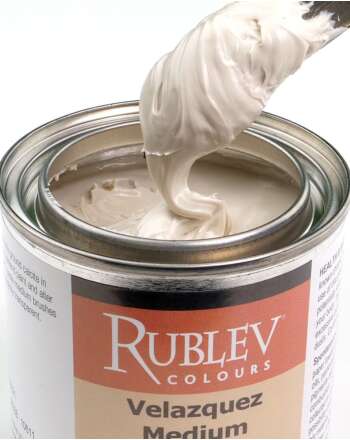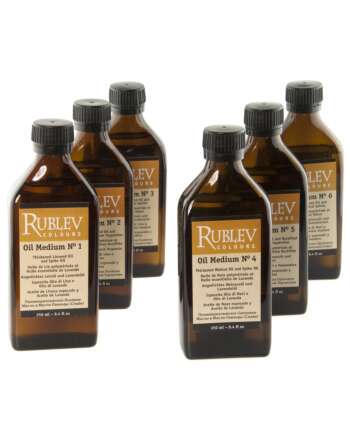



Rublev Colours® Oil Paint Mediums change the handling properties of paint: flow out and leveling; tackiness and drag; drying time, gloss, transparency, and others.
Rublev Colours® Oil Painting Mediums: Transform Your Oil Paints
The Best Mediums for Oil Painting
Oil paint mediums are amendments to oil paint. They contain additives that alter the functional properties of paint. Additives include solvents, oils, waxes, resins, extender pigments (fillers), and other substances to change the consistency of paint. Paint mediums typically comprise a binder and a solvent that make a paint vehicle. Oil paint consists of pigment and binder, but an oil painting medium consists of a binder, such as oil, and sometimes solvent or extender pigments.
Oil makes a slow-drying paint consisting of pigments in a drying oil, commonly linseed oil. The viscosity of the paint may be modified by adding a solvent, such as turpentine or mineral spirits (white spirits). Solvents thin oil colors and improve flow. They can also be used as brush cleaners or to remove oil paint from surfaces. Contrary to popular belief, solvents are unnecessary for cleaning brushes, tools, and surfaces after an oil painting session.
Using mediums in oil painting is not always necessary, and many successful paintings have been created without mediums. Oil paint mediums can help you achieve various effects in your painting with modern oil colors. You can alter the texture of the paint, quicken the drying time, increase oil paint’s transparency, and more.
The most basic medium is a drying oil. Linseed oil is often used, but slower-drying oils, such as walnut, poppy seed, and safflower oils, can be used as an oil paint medium. Read Drying Oils Used in Painting to learn more about oils as mediums.
and Extender Pigments increase the viscosity of oil paint so that you can apply it in thicker layers. Read Creating Impastos in Oil Painting to learn how to use paste mediums and extenders to build impastos.
are sometimes used to thicken paint to create a buttery texture. However, using wax in oil paint can lead to problems when cleaning paintings. Read the article Should Oil Painters Use Resin-Based Mediums such as Dammar and Maroger? to learn more about wax and resins in oil painting.

